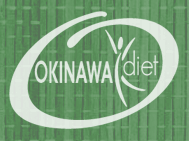Canadian national TV network features Okinawa Diet™, Dr. Willcox and the Caloric Density (CD) principle
August-05-2004
Note: original article no longer available, reprinted in full below.
Okinawa Diet August 5, 2004 Okinawa Japan has the highest percentage of hundred year olds in the world. The lifestyle habits of Okinawans have inspired a new book, "The Okinawa Diet Plan: Get leaner, live longer, and never feel hungry". Do the elderly population in Japan know something we dont? More than twenty thousand Japanese are over the age of a hundred. Most of them live in Okinawa. And not only do they live longer, they also live healthier. They have the lowest frequency in the world of the top three killers; heart disease, stroke, and, cancer. So what's their secret? "We studied the Okinawa diet because we think it's one of the keys to their health and longevity. It's particularly a key to the fact that older Okinawans never gain weight with age," says Dr. Bradley willcox. The study lead Dr. willcox and his colleagues to publish a new book, "The Okinawa Diet Plan". It's based on twenty-five years of landmark research that found its lifestyle, not genetics that influence longevity. "The principles of the Okinawa diet are to eat a diet low in caloric density. This means the number of calories per gram of food is lower. We all eat between two to three pounds of food a day. But their two to three pounds of food has about fifteen hundred calories and ours has almost double that," says Dr. willcox. He says the key is using calories wisely. "They eat a lot of foods that are water rich. These include vegetables, fruits, and soy foods. Their foods have the right kind of fat known as the omega 3 fats that you see in fish," says Dr. willcox. Foods in the diet are divided into four categories: Featherweight foods such as vegetables, tofu, and soups. These can be eaten freely. Lightweight foods such as white fish, shrimp, pasta, rice, and turkey. These can be eaten in moderation. Middleweight foods such as breads, bagels, and lean meat. These can be eaten in small portions. Heavyweight foods such chocolate, butter, oil, and nuts. These should be eaten sparingly. The focus is not on cutting out carbs, but eating good carbs. These are unrefined and won't suddenly raise blood sugar levels. "They eat sweet potatoes, a different type of starch that is better for you than a white potato. A white potato, in many ways, has the blood sugar equivalent of table sugar," says Dr. willcox. Many Okinawans also practice "hara hachi bu", or only eating until they are eighty percent full. But diet alone is not the secret to longevity. Okinawans keep physically active with activities that connect the physical with spiritual such as karate and tai chi. The elders are also use good stress reduction strategies. These are tips we can all follow for a healthy life. Dr. Rhonda Low's additional comments: How does the Okinawa diet work? Foods are divided into four groups based on their caloric density. Think about them and the way they would affect your body weight. Featherweight foods keep you light as a feather and you can eat as much as you want. These include the fruits and vegetables. Lightweight foods include such items as white fish, shrimp, whole grains, and beans. These can be eaten in moderation. The middleweights are salmon, whole wheat bagels, and lean meat. These should be eaten in small portions only. The heavyweights are chocolate, butter, oil, and nuts. These should be eaten sparingly You can also calculate the caloric density of food. You can do this by reading the food label and dividing the calorie count by the weight per serving. Featherweight foods should equal 0.7 or less. The Okinawa diet is also calorie light. Studies have shown that eating slightly fewer calories than we need makes our bodies run more efficiently. Eating until we're about 80% full is not a bad rule to follow. Does that mean you can eat sushi all the time? Sushi and sashimi work and so does eating a lot of soy. Its' pretty easy to eat this way if you live in Vancouver, but if you live elsewhere, or you're not a fan of sushi and tofu, the book also has a fusion version. This combines some eastern and western foods and a complete western version of the diet. This research also shows it's not about low carbs but choosing the right types of carbs to keep you lean. If you'd like to know more about the fascinating study of the Okinawan elders, you can find out more at www.okinawaprogram.com
|

